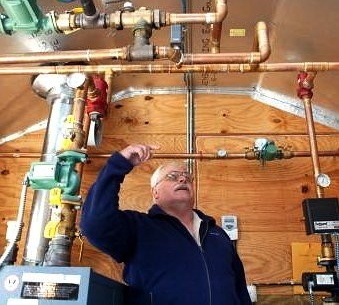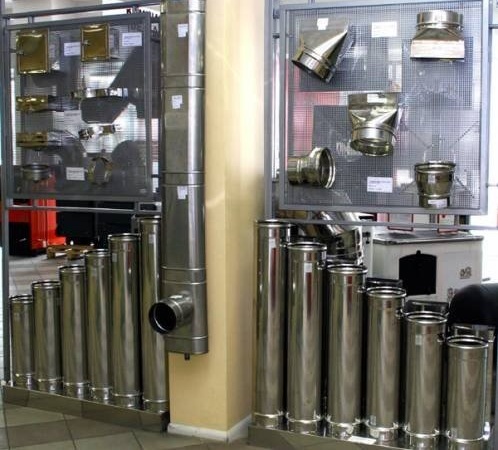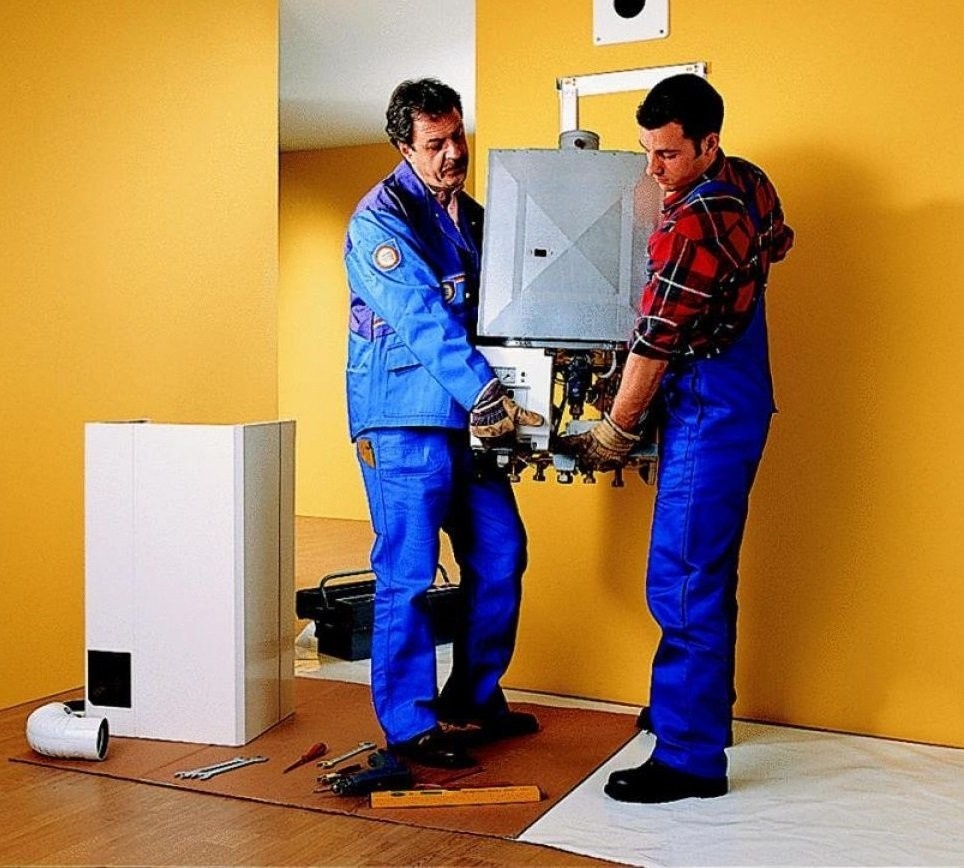Features of installing a liquid fuel boiler: how not to make mistakes during installation
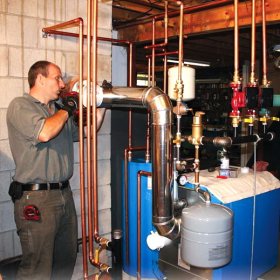
Liquid fuel boilers are an excellent solution for heating a country house. In some cases, it becomes almost the only one. For example, in the absence of the ability to conduct a gas main and insufficient power of the electric network. Liquid fuel appliances are safe and effective. There are single-circuit models designed only for heating, and dual-circuit models that can additionally supply the building with hot water. All the advantages of the equipment can be used to the full only if it is properly installed.
Content
General boiler installation rules
Safety and system performance depend on proper installation. When performing it, the following rules should be observed:
- The boiler is installed on an even solid base made of non-combustible materials;
- The base should easily support the weight of the device with a fuel supply and coolant. The best option is a concrete screed. It is best to lift it slightly above the floor, which will make it possible in the future to make maintenance and cleaning of equipment easier;
- When installing the boiler, even slight distortions are unacceptable. Device placement is controlled by level;
- The room in which the device is installed must be heated. The temperature in it should not fall below 10 ° C;
- In the boiler room good ventilation is required, which can provide a stable flow of fresh air;
- If the boiler is installed not in a building heated by it, but in a specially built boiler room or garage, the pipes leading to it are closed with thermal insulation and laid below the level of freezing of the soil;
- The equipment is installed in such a way that at least 40 cm of free space is left on each side for unhindered access.
It is important to note that it is advisable to equip special tanks for storing fuel. In an emergency, you will always have supplies that will allow you to heat the house for a while.
To answer the question which boiler is best suited for a private house, the following article will help:https://aquatech.tomathouse.com/en/otoplenie/kotly/otopitelnye-kotly-dlya-chastnogo-doma.html
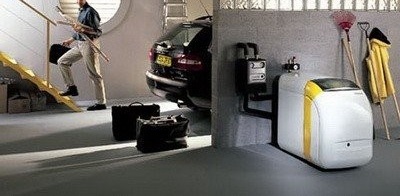
The oil boiler must be installed in a heated room. This can be a room reserved for him in the house, a specially built boiler room or a fenced area in the garage
Features of installation of a liquid fuel unit
Oil boilers are complex and potentially hazardous systems.It is best that specialists install them in strict accordance with the instructions attached to the device. When installing equipment, particular attention should be paid to certain steps.
An overview of popular models of boilers for liquid fuels is presented in this material:https://aquatech.tomathouse.com/en/otoplenie/kotly/kotly-otopleniya-na-zhidkom-toplive.html
Stage # 1 - pipeline construction
In most devices, access to the heating system is equipped on both sides, which greatly simplifies the installation procedure. Therefore, one of them is used for its intended purpose, the second is equipped with the so-called emergency assembly. The design is designed to protect the boiler from excessively high pressure. As soon as it becomes dangerous, the safety valve is activated. It is best to remove a hose or drain pipe from the valve and connect them to the sewer. It must be remembered that there should not be any additional valves between the emergency assembly and the boiler.
Stage # 2 - selection of the circulation pump
It is designed to maintain circulation. coolant in system. The device can be installed both on the return pipe, and on the feed. It depends on the installation scheme. Some boilers have separate wires for connecting the pump. Their power may not be enough for several devices, then they connect to the outlet regardless of the heater. Each pump must be installed strictly in a certain position, which is indicated in the passport to the device.
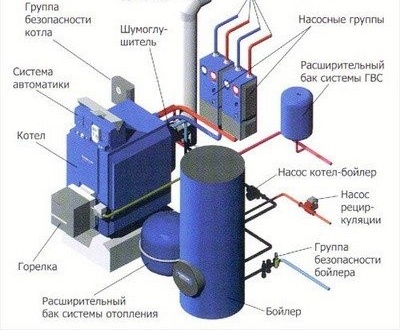
To connect a liquid fuel boiler, it is necessary to install and connect several elements shown in the diagram
Stage # 3 - installation of a strainer for water purification
Such a device should be installed in the direction of the fluid in front of the pump. The system purifies water from sufficiently small mechanical particles that are always present in the liquid. Over time, they damage the pump and clog the pipes inside the boiler or in the heating system, which leads to the failure of the system and subsequent expensive repairs. It is much cheaper to install a filter. Its maintenance is reduced to regular cleaning of the device once every several months.
Stage # 4 - installation of the chimney pipe
The efficiency of the boiler depends on how correctly the installation of the structure is carried out. With installation errors, it will often clog with soot and soot, and work intermittently.
The most common errors when installing the chimney are:
- Use of non-separable joints. For the normal functioning of the system, it must be cleaned at least once or twice a year, which is extremely difficult or even impossible to implement for an integral non-separable structure.
- The narrowed diameter of the chimney. In this case, the longer the pipe, the faster it will become clogged with soot. It will require too frequent cleaning of the structure.
- Lack of counterclone, which is created to prevent condensate from entering the boiler.
- Using a flexible metal corrugation for the removal of gases. Such a system is unreliable. When it burns, the exhaust gases begin to flow into the room, which is unacceptable.
For liquid fuel boilers, coaxial or traditional chimney pipes can be equipped. In any case, the design is manufactured and installed in compliance with all standards.
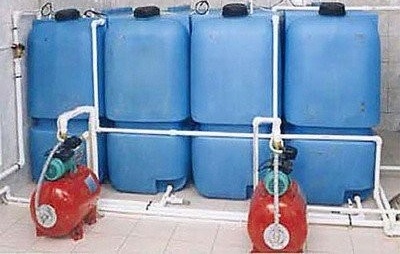
Experts recommend equipping fuel tanks with special cranes located at the bottom of the tank. So it will be possible to drain the condensate without any problems
Stage # 5 - installation of fuel tanks
Tanks can be installed in the boiler room or in any other place. The first option is preferable, because the fuel does not freeze or wax even in the most severe cold. In this case, do not forget about fire safety.
Tanks without a booster fuel pump must be at least 30 cm above the lower level of the boiler.If the main tank is on the street or dug into the ground, an intermediate tank is necessarily installed in the boiler room, in which the fuel will be heated and unnecessary impurities can be deposited.
Stage # 6 - filling the heating system with water
The procedure is performed with the valves fully open. The pressure should be about 1.5-2.5 bar. After the system is full, the connection between the water supply system and the boiler is disconnected, otherwise the water from the heating system will pollute the water supply. In order not to damage the equipment, it is not recommended to add various inhibitors to the coolant. Subsequently, the water level in the system is constantly monitored. Way recharge water systems will be explained by the specialist installing the heater.
An interesting choice may be the manufacture of a boiler for waste oil. Drawings and assembly instructions for this unit are located here:https://aquatech.tomathouse.com/en/otoplenie/kotyol-s-vodyanym-konturom-na-otrabotannom-masle-chertezhi-i-instrukciya-po-izgotovleniyu-svoimi-rukami.html
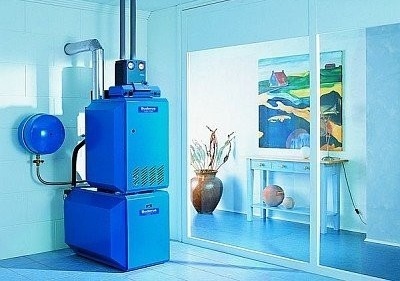
Liquid fuel appliances must be located on a solid, non-combustible base that can support the weight of the appliance and coolant
How to work with the boiler in order to save money?
The heating system will operate in the most efficient and economical mode, if you observe the following rules:
- Ensuring the consumption of only the necessary amount of electrical energy. For example, if there are multi-stage pumps, transfer them to a lower stage.
- Regular system maintenance. An improperly adjusted boiler or a dirty burner significantly reduces the overall efficiency of the system.
- The ability to regulate the temperature regime of the room, which will, if necessary, reduce the boiler power and, accordingly, save resources.
- Ensuring adequate air circulation. Adverse furniture placement or long curtains that impede the movement of air close to radiators absorb about 20% of the radiated heat.
- Rational ventilation. It should be short-lived. Otherwise, the walls and furnishings are cooled, which leads to a long restoration of the microclimate in the room.
- Delete air from radiators.
Oil-fired boilers are efficient, but quite sophisticated and potentially hazardous equipment. Such systems should be installed only by specially trained people. Amateur activity is unacceptable. It can turn into big troubles and a threat to the safety of those living in the house. In addition, the specialists who installed the boiler can also subsequently maintain the system, fully responsible for its reliability and safety.
